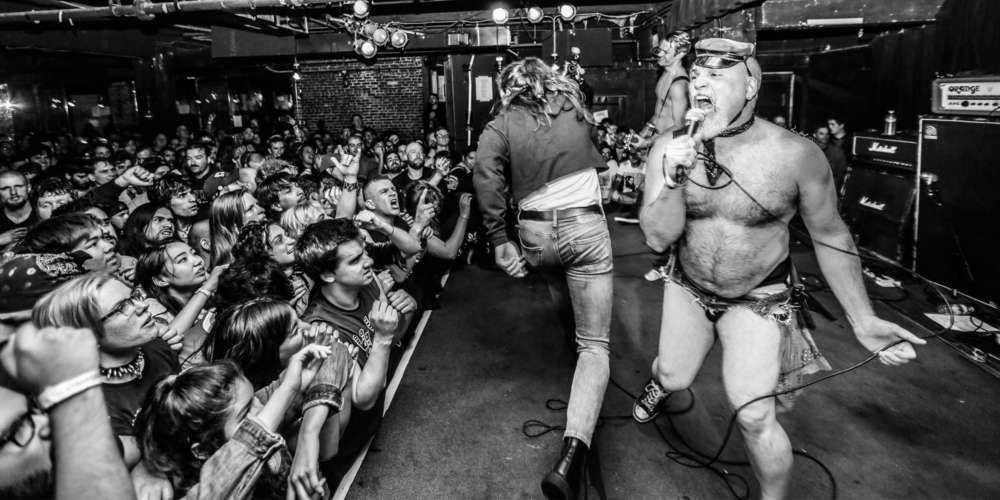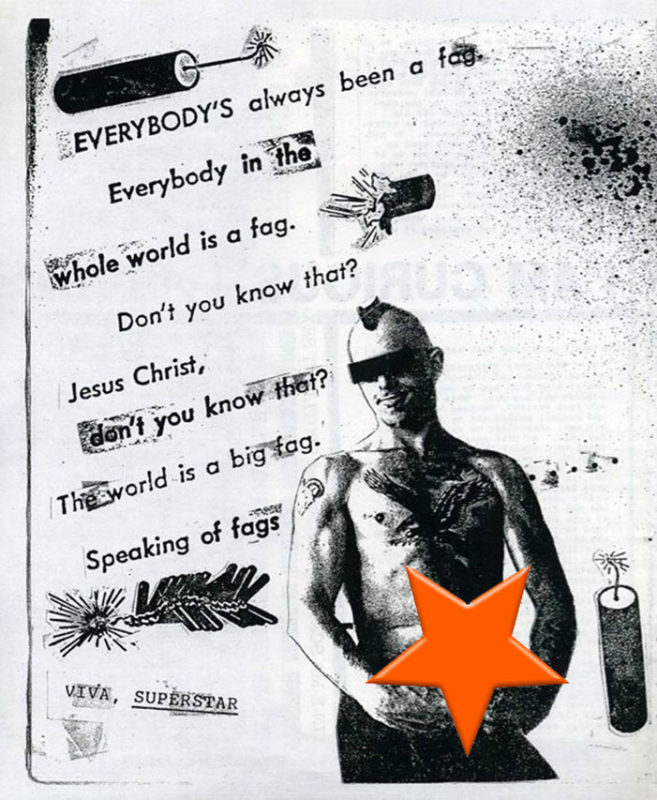
09 Jun Queercore: A Dirty History of the LGBTQ Movement That Spits on Respectable Gays
Written by Daniel Villarreal
In the mid-1980s — amid the Reagan administration’s lethal neglect of the AIDS epidemic and a increasingly vocal Christian “moral majority” who blamed homosexuality for a decline in “family values” — a homosexual splinter of the punk rock scene broke off and began to challenge societal disapproval of queerness through counter-cultural music, zines, art and film. This movement eventually became known as Queercore, and it now has a documentary dedicated to its history and lasting social impact.
The documentary is called Queercore: How to Punk a Revolution, and it stars queer directors Bruce La Bruce and John Waters; female musicians Beth Ditto, Kim Gordon and Peaches; queer performers Genesis P-Orridge, Justin Bond and Jayne County and many others.
A quick and dirty history of Queercore
Two queer creatives in specific —G.B. Jones and Bruce LaBruce – helped lay the groundwork for the Queercore scene through their zine J.D., a publication which sought to expose the “bourgeois-ification of the gay movement and the problematic sexual politics of punk” by sharing their own work and that of other disenfranchised queer creatives.
LaBruce, a man who went on to direct gay films that explore taboo sexuality, told Dazed magazine:
“Gay assimilation was already starting back then, accelerated by the AIDS crisis, so the gay movement was already distancing and disassociating itself from its more unruly, extreme and anti-establishment elements – queers who did not fit into the gay white bourgeois patriarchy.”
Most of the punk scene before Queercore was dominated by straight white men and so Queercore sought to actively oppose that dominant authority and reject the idea that gay and lesbian people should be respectable and otherwise indistinguishable from straight people. The zine J.D. often juxtaposed pornographic images alongside angry text affirming the superiority of queers.
LaBruce said he wanted his publication to be “inclusive of queers of all races, ages, genders and sexual persuasions…. (not just) queer punks, but also prison shut-ins, prostitutes, oppressed racial minorities, transgender people … anyone who went against the grain and had similar interests, sexual deviance and radical politics.”

How Queercore fucked with gender politics
The Queercore movement coincided with the rise of the Riot Grrrl movement (which focused on the cultural power of feminism, reproductive rights and gender identity), but it also gave rise to its own brand of gender-fucked politics, initially through the black intersex performance artist Vaginal Cream Davis.
Even though Davis doesn’t consider herself a musician and has said, “My goal has never been to purposely entertain anyone,” she still participated in art-music groups like Black Fag, ¡Cholita! The Female Menudo and The Afro Sisters which dealt in overtly sexual and racial themes.
Journalist Ari Fitzgerald said that Davis used her performances “to [take] giddy, satirical stabs at the old-world order, leveling criticism at white privilege and the patriarchy with nuanced wit and game-show-style camp.”
The politics in Queercore dictated that there was no primary or pure way of expressing gender or sexuality — whether that meant building your identity around a fetish, being proud of having STDs, having many lovers, wanting to teach gay sexual health in schools, not caring about the gender of your preferred genitals or getting married to yourself and masturbating until death.
Queercore’s sensibilities still exist today
In 2010 and 2011, amid the battles to allow gays in the military and same-sex marriage, the Against Equality Press published two books of essays entitled Against Equality critiquing gay marriage and opposing military service.
Some of the essays opposed the repeal of “Don’t Ask, Don’t Tell” (the military’s ban on openly gay servicemembers), criticized the citation of Iran’s anti-gay executions as a pre-text for hostility towards the Middle East and talked about how the singular focus on marriage eclipsed bigger issues like gender equality, sex work and reducing violence against children.
The Queercore spirit also remains in those who question whether Pride parades should allow corporate polluters, for-profit-prisons and police departments with histories of racism and LGBTQ harassment.
You can also find small Queercore groups in local queer music festivals like (Another Country and Gay Bi Gay Gay) and even on small online groups, even on Facebook (as evidenced by this decidely Queercore video from the group Bottom Leftist Memes).


